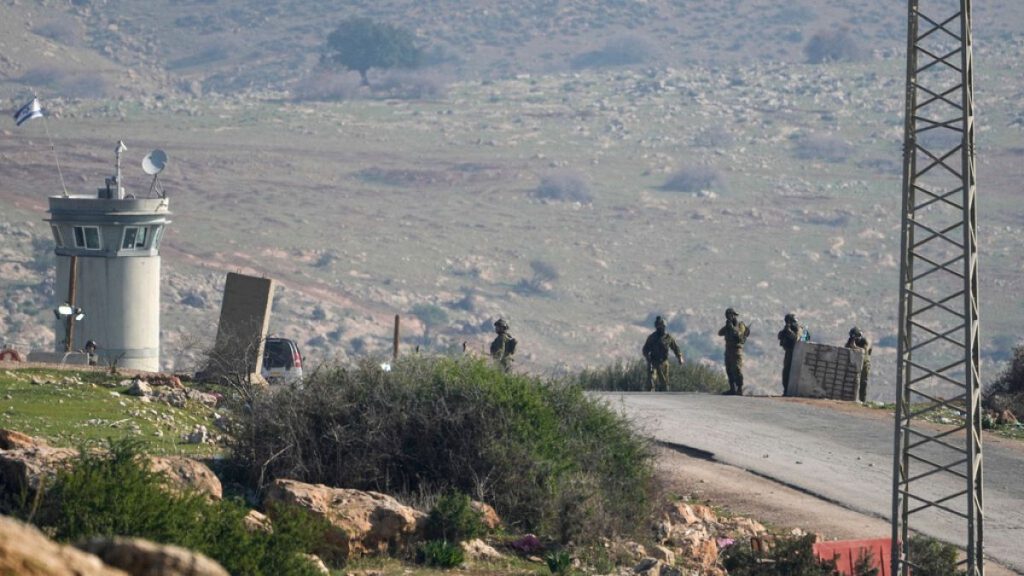Paragraph 1: The Genesis of the Ceasefire
The volatile landscape of the Gaza Strip witnessed a glimmer of hope in January 2024 with the implementation of a meticulously crafted three-phase ceasefire agreement between Israel and Hamas. This truce emerged after an arduous period of negotiations, aiming to quell the intense fighting that had raged for 15 months. The conflict, marked by significant casualties and widespread destruction, had deeply destabilized the region. The first phase of the agreement served as a crucial initial step, halting the active hostilities and paving the way for the delivery of essential humanitarian aid to the beleaguered population of Gaza. A key element of this initial phase involved a prisoner exchange, with 18 Israeli hostages being released in return for hundreds of Palestinian prisoners. This exchange, while undoubtedly significant, represented just the first step in a complex and delicate process.
Paragraph 2: The Challenges of Phase Two
The second phase of the ceasefire agreement presented a formidable set of challenges for both sides. Key issues on the negotiating table included further exchanges of hostages and prisoners, the critical establishment of a mechanism for extending the truce indefinitely, and the highly sensitive question of governance in Gaza. Hamas officials confirmed the commencement of discussions with international mediators, signaling a commitment, at least initially, to pursuing a diplomatic resolution. However, looming over these talks was the potential for a resurgence of conflict. The agreement stipulated a deadline in early March, creating a sense of urgency and emphasizing the precarious nature of the ceasefire. Failure to reach a consensus on these multifaceted issues threatened to plunge the region back into violence.
Paragraph 3: Political Pressures and Domestic Concerns
Israeli Prime Minister Benjamin Netanyahu faced intense pressure from right-wing factions within his own coalition government. These elements vehemently opposed the ceasefire and advocated for a resumption of hostilities against Hamas. Finance Minister Bezalel Smotrich’s ultimatum – threatening to withdraw his ministers from the coalition if the war wasn’t reignited – underscored the precariousness of Netanyahu’s political position. This internal dissent not only complicated the negotiations with Hamas but also raised the specter of early elections in Israel, further adding to the instability. Netanyahu’s scheduled meeting with then-US President Donald Trump added another layer of complexity, as international pressure played a crucial role in shaping the trajectory of the ceasefire.
Paragraph 4: International Involvement and Trump’s Role
President Trump’s involvement in the ceasefire process introduced a volatile element into an already delicate situation. While he claimed credit for facilitating the agreement, he simultaneously expressed skepticism about its long-term viability, stating he had "no guarantees" of its success. This ambiguity from a key international actor injected uncertainty into the proceedings. The timing of the ceasefire, negotiated just days before Trump’s return to office, underscored the political maneuvering at play. The role of international mediators, while crucial in facilitating dialogue, also highlighted the complexities of navigating the competing interests of regional and global powers.
Paragraph 5: Hamas’s Stance and the Future of Gaza
Hamas, having reasserted control over Gaza following the initial ceasefire, adopted a firm stance on the release of any remaining Israeli hostages. They insisted that such a release would only be considered in exchange for a complete cessation of Israeli military operations and a full withdrawal of Israeli forces. This demand presented a significant hurdle in the negotiations, reflecting the deep-seated mistrust between the two sides. The question of Gaza’s governance remained a central point of contention, with Hamas’s assertion of control creating a complex power dynamic. The future of Gaza’s governance structure was inextricably linked to the success or failure of the ceasefire negotiations.
Paragraph 6: The Road Ahead – Uncertainty and the Threat of Renewed Conflict
The ceasefire agreement, while representing a crucial step towards peace, remained fragile and vulnerable to collapse. The second phase of negotiations, fraught with complex issues and competing interests, held the potential to either solidify the truce or reignite the conflict. Netanyahu’s commitment to "total victory" over Hamas and the return of all hostages captured during the October 7 attack, which triggered the latest round of fighting, presented a significant obstacle to achieving a lasting peace. The possibility of renewed conflict loomed large, threatening to further destabilize the region and exacerbate the humanitarian crisis in Gaza. The success of the ceasefire hinged on the willingness of both sides to compromise and engage in good-faith negotiations, a prospect that remained uncertain given the deep-seated mistrust and long history of conflict.

